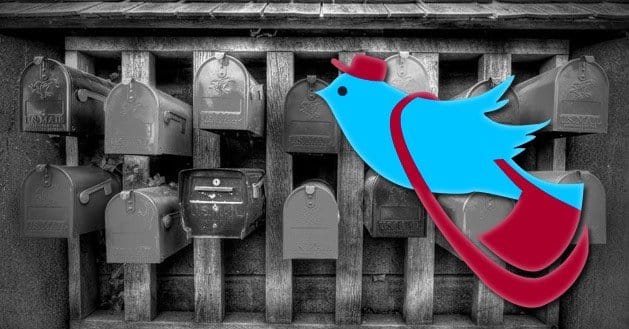 Written by ContentPowered.com
Written by ContentPowered.com
Whether you want to follow current events, keep up with friends, or promote your business, Twitter has become an important social networking tool. The following will help you get started with your own Twitter account.
Decide What You Want to Do
Twitter can be useful for lots of different reasons:
- Connecting with friends and family
- Keeping up with current events
- Following your favorite celebrities
- Promoting your business
- Establishing a professional profile
- Staying up-to-date on news and opportunities in your professional field, hobbies, or interests
Knowing what you want to do with your Twitter account will help you make other decisions as you set up your account. If you want to use Twitter for multiple reasons—for example, following celebrities and promoting your business—you may want to set up more than one Twitter account so that you can keep your personal and professional information separate.
Sign Up
When you sign up, you will give your name and e-mail, and select a unique username. When setting up your account, you should consider what you are using your account for. If you want to promote your business or establish a professional profile, you should use your full name or business name so that clients and employers can find you easily. If you are using your Twitter account for personal reasons, you can be more creative in choosing your username.
Keep in mind that your name, e-mail, and username are all searchable on Twitter and that tweets show up in Google searches. If you want to keep your personal life private, give just your initials for your name, use a separate e-mail account (you can sign up for free e-mail on Google, Yahoo!, Hotmail, and other services), and choose a username that isn’t readily identified with you.
Adjust Your Settings
Once you’ve set up your account, you can adjust your settings for privacy, notifications, linked accounts, and more. Click on the widget symbol (to the right of the search field) and select Settings.
Unless you want to be inundated with e-mails, you’ll probably want to deselect most of the notifications.
Under the Security and Privacy tab, you can set your account to be private so that only people whom you approve can see your tweets.
Complete Your Profile
While you’re adjusting the settings, you can also complete your Twitter profile by adding a photo or other image, a location, a link to your Website, and a brief biography. If you are using this account for professional reasons, you will want to make sure that your profile is complete.
Under the Profile tab, you can also decide whether you want your Twitter account to be connected to your Facebook account. By connecting the two accounts, your tweets will be automatically posted to your Facebook page. The default setting is to connect the two accounts, so you will need to select “Disconnect” if you want to keep the two separate.
Post a Tweet
A message posted to Twitter is called a “tweet” and the act of posting a message is called “tweeting.” Tweets are limited to 140 characters (including spaces), so you have to be succinct.
To tweet, click in the box that says “Compose new Tweet” (it’s in the upper-left corner of your Twitter page). Start typing. A counter at the bottom of the box will keep track of your characters. When you are done writing, click “Tweet” to post your message.
Add Links, Photos, and More
You aren’t limited just to text in your tweets. You can add links, photos, and more.
To add a photo from your computer to your tweet, click on the image of a camera under the tweet text box.
To add a link to your tweet, copy and paste the URL into the tweet text box. Twitter will automatically convert the URL to a 22-character link.
To link your tweet to another Twitter user, insert their Twitter username with the “@” symbol in front. For example: I can’t wait to see @katyperry in concert tonight.
Also check out Instagram.com and Vimeo.com for easy ways to tweet photos and videos.
Hashtags (#) are an important part of tweeting. Hashtags link tweets on the same topic. For example, all tweets with the hashtag #bostonmarathon would be grouped together.
When many tweets are posted with the same hashtag, they become a “trending topic.”
Use hashtags to help people find your tweets or to organize your tweets into topics. Just remember that hashtags count toward your character limit, so don’t overdo it.
Connect with Others
Now that you have the basics of posting a tweet, you will want to start following others and find followers.
You can search for Twitter accounts to follow using the search field at the top of the page. To follow an account, simply click on the “follow” button. If you want to stop following an account, click “unfollow.”
Twitter has millions of accounts to choose from. Choose wisely or you will quickly find yourself overwhelmed by tweets. Pick a few to start. From those, you’ll find other Twitter accounts that focus on your interests. Remember too, that anyone can see who you are following, so be cautious if you don’t want everyone to know which celebrity you have crush on.
You also want to get others to follow you, especially if you are using Twitter to promote your business or build a professional profile. Make sure that you include a link to your Twitter account in your e-mail, on your Website, and on business cards. You can also attract new followers by using hashtags so that your tweets are included in topic-specific feeds.
Replying and Retweeting
Once you start tweeting and following, you’ll probably want to interact with other Twitter users. By hovering your cursor over a tweet, a series of options will appear, including Reply, Retweet, and Favorite.
Replying lets you post a response that is linked to the Twitter profile of the person you are reply to. Retweeting posts someone else’s tweet to your Twitter account. Favoriting a tweet posts it to your feed with a gold star; it is similar to “liking” a post in Facebook. In all cases, the original tweeter will see that you have replied to, retweeted, or favorited their tweet. This is a great way to build connections and good will with other users.
Of course, you should follow good netiquette when replying and retweeting. Don’t flame, shout, or harass others. And always give credit when retweeting.
Get Tweeting
You are now ready to set up your Twitter account and start tweeting. Once you get more comfortable with the basics, you can explore other options for using and managing your Twitter account.



Thank u for getting me started, Twitter really isn’t that complicated when you break it down like this. Great writeup